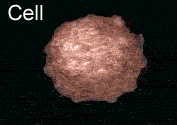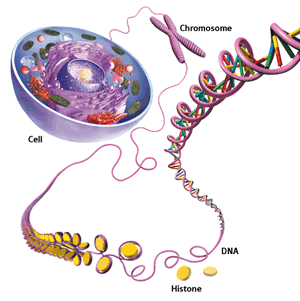DNA

The nucleus is a porous structure that houses the genetic material of the cell. The genetic material is made from a long polymer known as deoxyribose nucleic acid (DNA).
The DNA polymer is coiled into structures called chromosomes during cell division. Relatively small segments of DNA along the entire polymer are called genes and code for specific proteins.

Continue with RNA